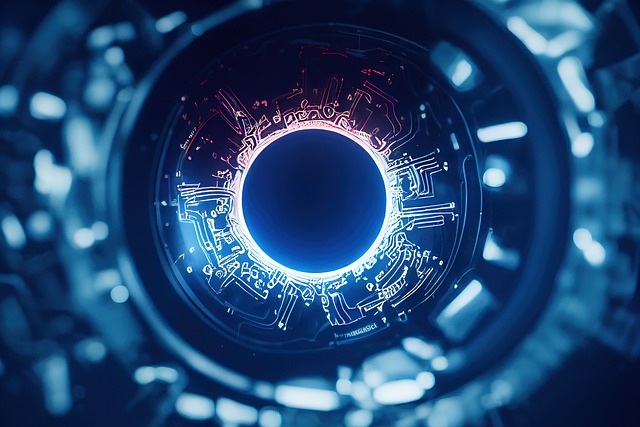# The Aesthetic Journey: How AI is Shaping New Dimensions in Visual Art and Expression
The intersection of technology and art has always been a fertile ground for innovation. In recent years, artificial intelligence (AI) has emerged as a transformative force in the realm of visual art, reshaping not only how artists create but also how audiences engage with art. This article delves into the multifaceted ways AI is influencing the artistic landscape, examining its role in creation, curation, and the evolving relationship between artist and audience.
## The Creative Process Reimagined
Artificial intelligence is revolutionizing the creative process, offering artists new tools and methodologies that were previously unimaginable. By leveraging algorithms and machine learning, artists are able to explore vast possibilities in their work, pushing the boundaries of traditional art forms. For instance, AI-driven software can analyze thousands of artworks to identify patterns, styles, and techniques, allowing artists to experiment with these insights in their own creations.
Moreover, generative art has gained significant traction, where algorithms create unique pieces based on input parameters set by the artist. This approach not only enhances the creative process but also raises questions about authorship and originality. As artists collaborate with AI, they are challenged to redefine their roles and the nature of creativity itself. The traditional notion of the artist as a solitary genius is evolving into a more collaborative model, where human intuition and machine computation coexist harmoniously.
Interestingly, AI is not just a tool but also a collaborator. Projects like OpenAI’s DALL-E and Google’s DeepDream demonstrate how machines can generate visually stunning images based on textual descriptions or existing artworks. These technologies serve as a springboard for artists, inspiring new ideas and artistic directions. As a result, the creative landscape is becoming increasingly dynamic, with AI acting as both a muse and a medium.
## Curating and Discovering Art in the Digital Age
The role of AI extends beyond creation; it is also reshaping how art is curated and discovered. In a world inundated with visual content, AI algorithms are employed to sift through vast amounts of data, identifying trends and preferences that can inform curatorial decisions. This capability is particularly valuable for galleries and museums that seek to engage diverse audiences while maintaining relevance in a rapidly changing cultural landscape.
Personalized recommendations powered by AI are transforming the way individuals interact with art. Platforms like Artsy and Saatchi Art utilize machine learning to analyze user behavior, allowing them to suggest artworks that align with individual tastes. This democratization of art access fosters a more inclusive environment, enabling emerging artists to gain visibility alongside established names. Furthermore, AI-driven analytics can provide insights into audience engagement, helping curators understand which pieces resonate most and why.
In addition to enhancing the curation process, AI is also paving the way for innovative exhibition formats. Virtual and augmented reality experiences, powered by AI, allow audiences to engage with art in immersive ways that transcend physical limitations. For instance, AI can create interactive installations that respond to viewer movements or emotions, thereby fostering a deeper connection between the audience and the artwork. This fusion of technology and art not only enriches the viewer experience but also challenges traditional notions of art consumption.
## The Evolving Relationship Between Artist and Audience
The rise of AI in the art world is fundamentally altering the relationship between artists and their audiences. Traditionally, the artist’s intent and the viewer’s interpretation were often distinct and separate. However, with the advent of AI-driven art, this relationship is becoming increasingly interactive and collaborative. As audiences engage with AI-generated works, they are not mere spectators but active participants in the artistic dialogue.
One of the most intriguing aspects of AI-generated art is its capacity for audience feedback. Artists can leverage social media and online platforms to gather real-time responses to their work, allowing them to iterate and adapt based on viewer preferences. This immediacy fosters a sense of community and co-creation, as audiences feel more invested in the artistic process. The notion of art as a static object is giving way to a more fluid understanding of art as an evolving conversation.
Furthermore, the ethical implications of AI in art are prompting critical discussions about authenticity, ownership, and the role of the artist. As AI-generated works become more prevalent, questions arise about the value of human creativity versus machine-generated content. Artists are increasingly tasked with navigating these complex issues, prompting a reevaluation of what it means to be an artist in the age of AI. This dialogue is essential for shaping the future of art and ensuring that technology enhances rather than diminishes the human experience.
## Conclusion: Embracing the Future of Art
In conclusion, the aesthetic journey through which AI is shaping new dimensions in visual art and expression is both exciting and complex. From redefining the creative process to transforming curation and audience engagement, AI is a catalyst for innovation in the art world. As artists embrace these new technologies, they are not only expanding their creative horizons but also challenging societal norms and expectations surrounding art.
The ongoing dialogue about the implications of AI in art will undoubtedly continue to evolve, prompting artists, curators, and audiences to reflect on their roles in this new landscape. Embracing the potential of AI while remaining mindful of its ethical considerations will be crucial as we navigate this uncharted territory. Ultimately, the fusion of art and technology holds the promise of a richer, more diverse artistic experience, one that celebrates human creativity while harnessing the power of artificial intelligence. As we move forward, the aesthetic journey is bound to become more inclusive, dynamic, and profoundly transformative.

